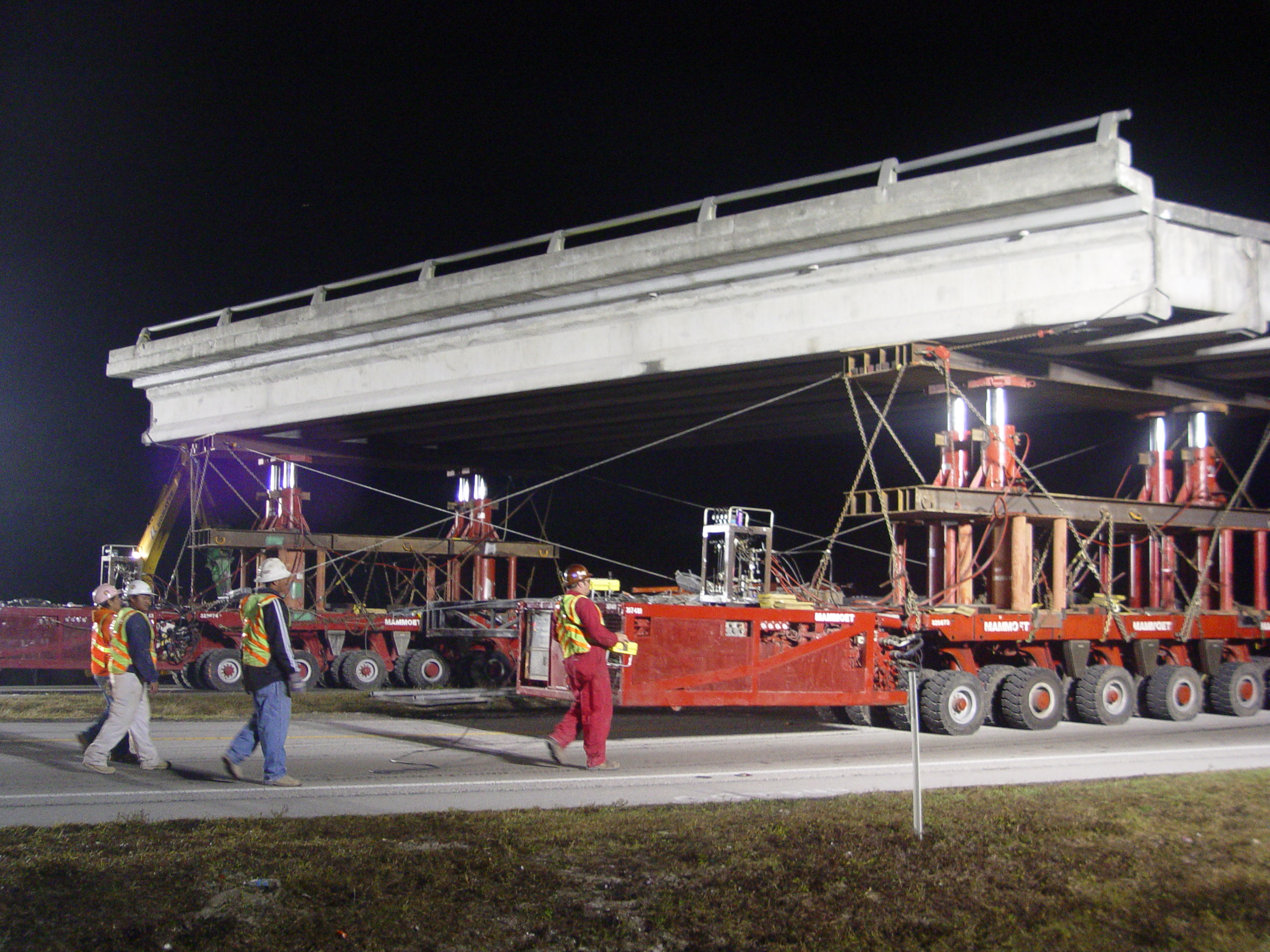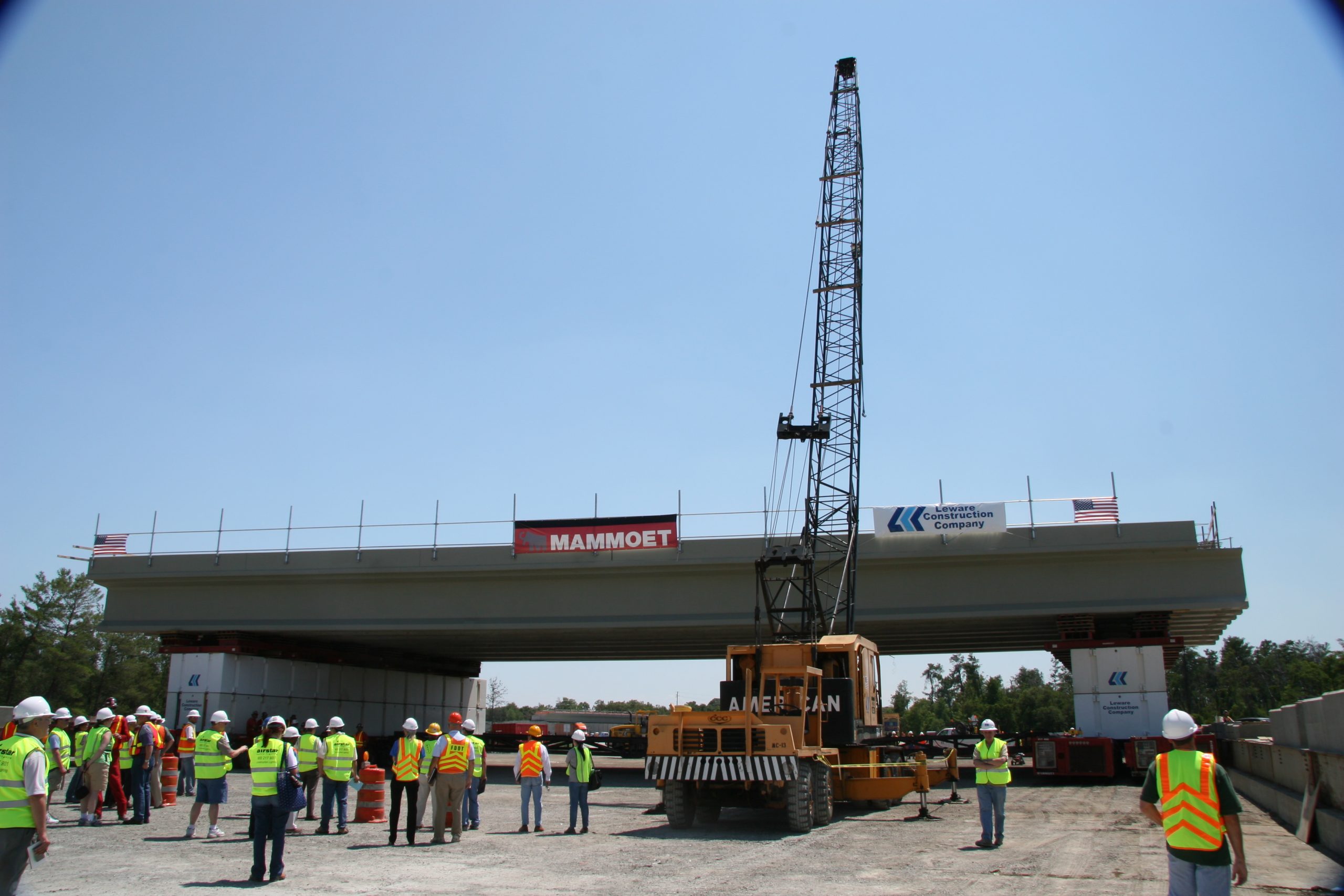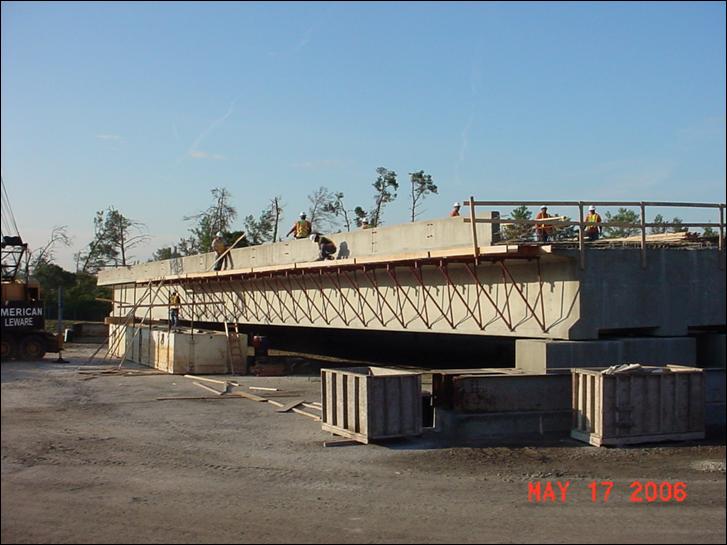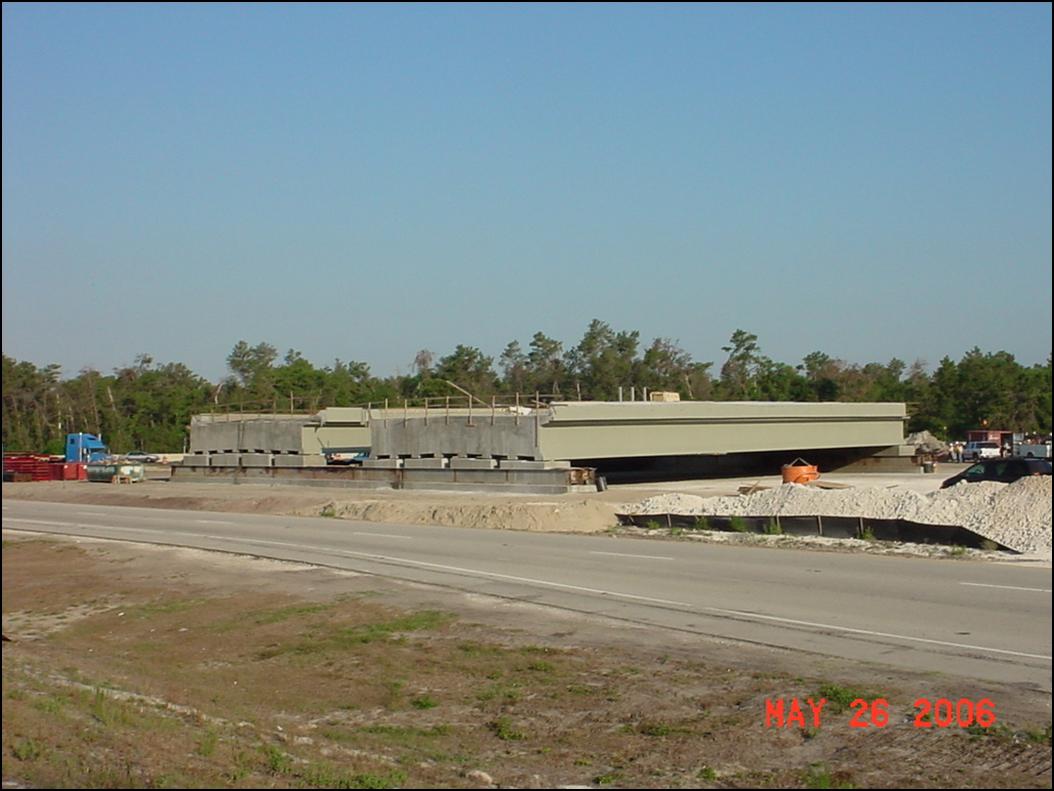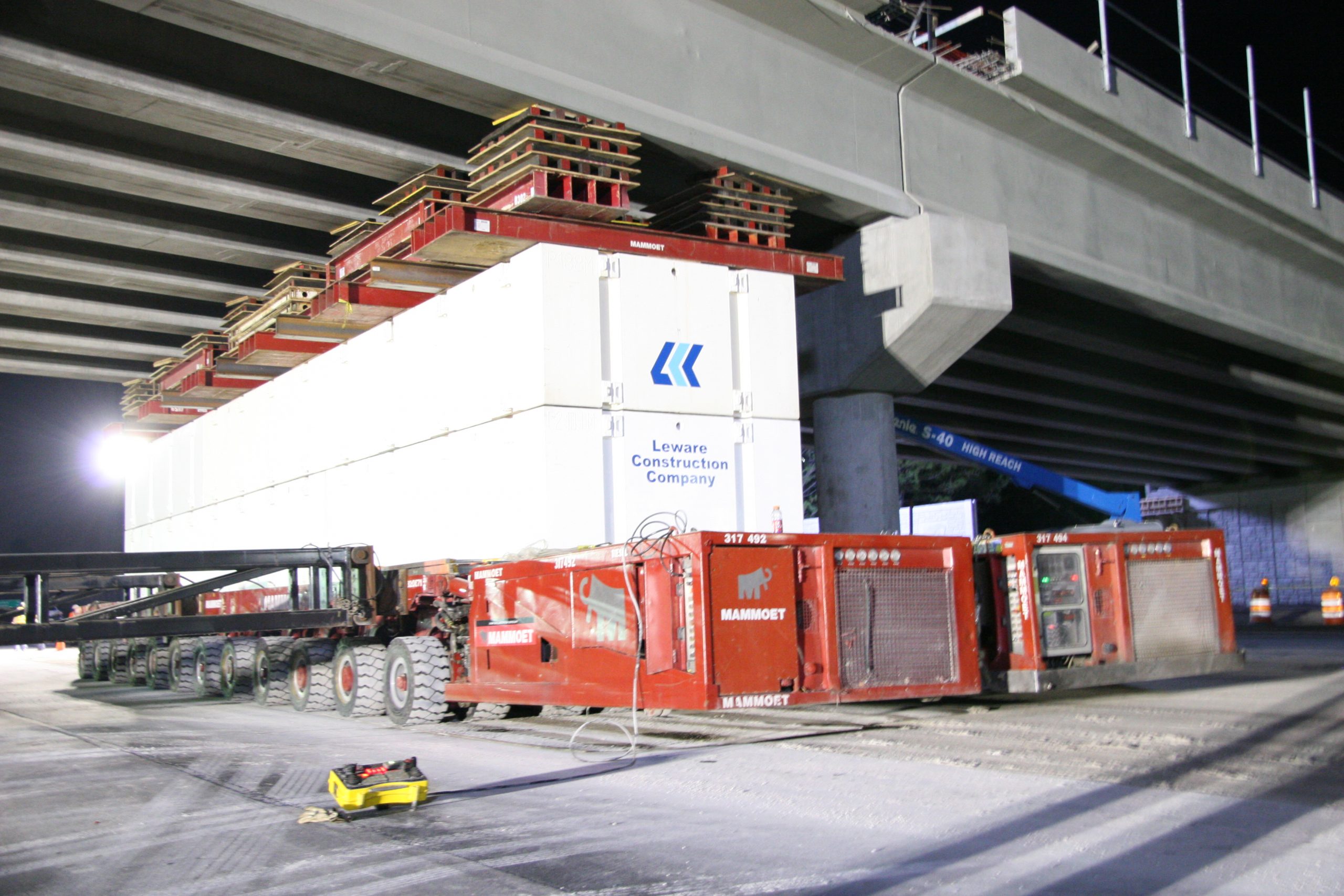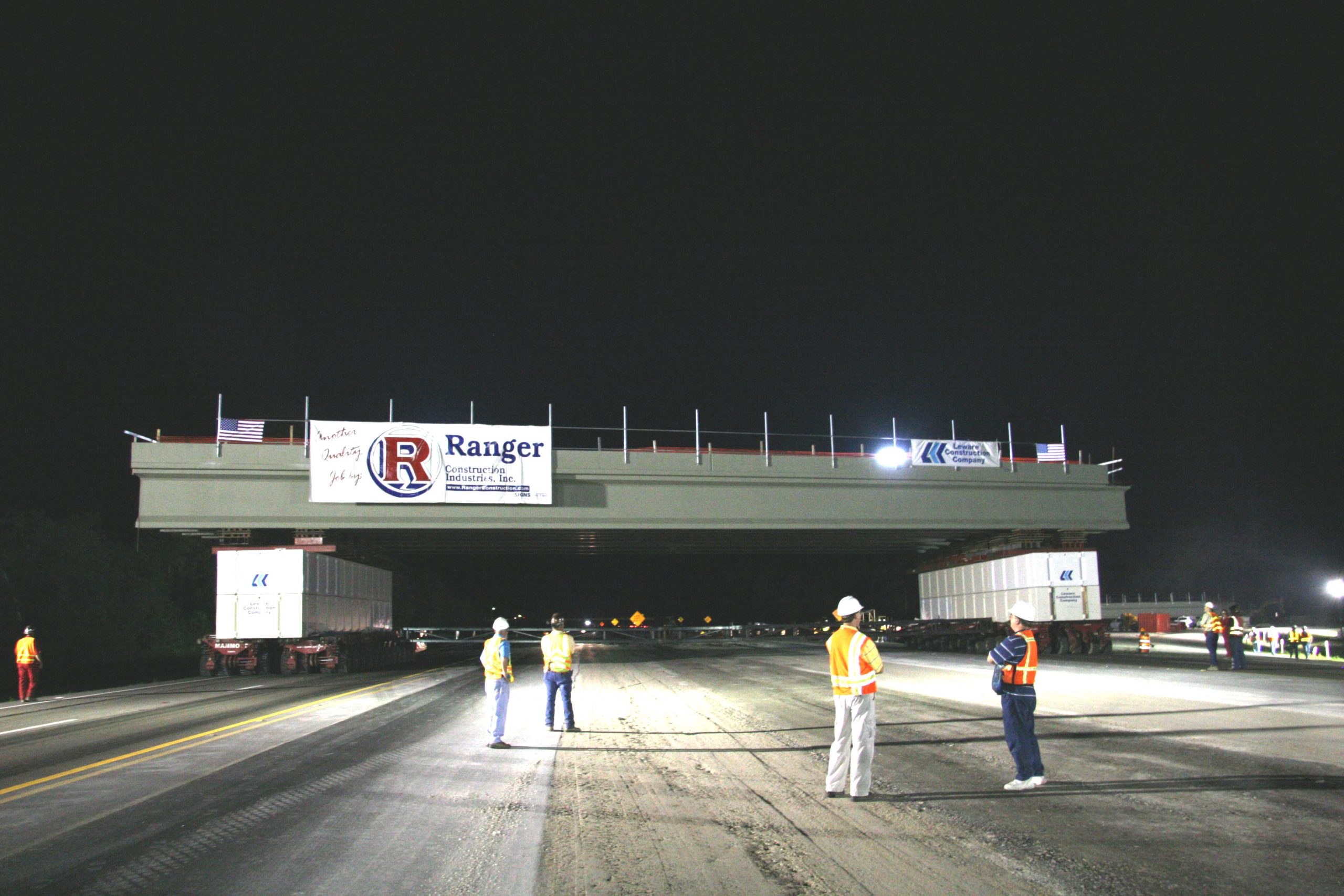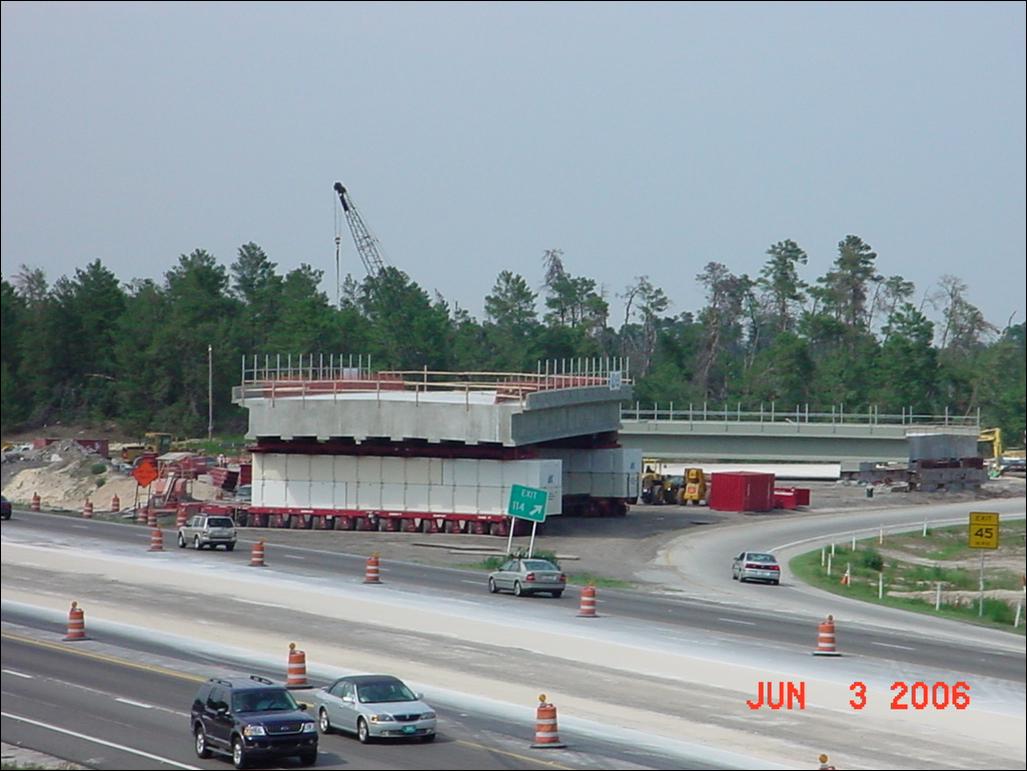State: FL
County:
Owner: Volusia County
Location: Urban
Spans: Two-span
Beam material: Concrete
Max Span Length (ft.): 143
Total Bridge Length (ft.): 286
Construction Equipment Category: SPMTs
ABC Construction Equipment: SPMT(s)
State ID Number: 790218
NBI Number:
Coordinates
Latitude: 28.9487629 | Longitude: -81.2597961
Bridge Description
Project Summary:Project Location:
Graves Avenue over I-4 in Volusia County northeast of the city of Orlando in Central Florida
Impact Category:
Tier 1 (within 1 day)
Mobility Impact Time:
ABC: Graves Avenue: 8-month closure, I-4: 4 partial-night closures;
Conventional: Graves Avenue: 12-month closure, I-4: 32 nighttime closures
Primary Drivers:
reduced traffic impacts; reduced onsite construction time; improved work-zone safety; improved site constructability; improved material quality and product durability
Dimensions:
286-ft-long and 59-ft-wide two-span full-width decked prestressed beam bridge (143 ft – 143 ft); individual span roll-in; 1,300-ton self-weight per span
Average Daily Traffic (at time of construction):
67800
Traffic Management (if constructed conventionally):
Traffic management alternative, if constructed conventionally: extended use of 5-mile detour
Existing Bridge Description:
The existing two-lane four-span prestressed concrete beam bridge was 215 ft long and 30 ft wide. It consisted of four AASHTO Type III beams in each of its 37-ft-long end spans and five AASHTO Type III beams in each of its 70.5-ft-long middle spans. Built in 1958, it was replaced with a widened structure and to accommodate the widening of I-4 from four to six lanes.
Replacement or New Bridge:
The replacement bridge has two 12-ft-wide traffic lanes, and a 10-ft-wide shoulder and 5-ft-wide sidewalk on each side. The cross-section in each span consists of eight 78-in-deep Florida bulb-tee beams at 7.61 ft spacing with 8-inch-thick composite concrete deck. The substructure consists of conventional cast-in-place reinforced concrete abutments and piers with pretensioned concrete driven pile foundations. The superstructure was designed for conventional construction; minimal structural design changes were required to field change the use of SPMTs into the contract.
Construction Method:
This project was the first use of SPMTs to move bridge spans that cross a US Interstate highway. The beams for the two replacement spans were pretensioned concrete beams fabricated offsite, shipped to the staging area a quarter mile from the bridge site, and erected on the temporary supports that were identical in relative elevation to the onsite pier configuration. The beams were designed as simple span for both dead load and live load. Intermediate diaphragms were added at midspan. The full-depth cast-in-place concrete deck was designed based on strip analysis and did not include post-tensioning. Because of the upward thrust due to beam rotation, additional longitudinal reinforcement was added across the interior support, as typically done in decks in Florida. Expansion joints were located at each span end of this bridge. Placement of the deck concrete was stopped 5 ft from each side of the interior support to facilitate installation of the spans; the closure pour provided a continuous deck with good rideability. Bridges in Florida are profiled, ground as needed, and transverse-grooved after the entire deck has been placed.
Removal of Existing Spans:
Before the middle span removals, the contractor removed the two end spans of the existing bridge using conventional means since they were outside the I-4 traffic lanes. SPMTs with 360-ton capacity were used to remove the two 250-ton middle spans over I-4. One six-axle SPMT unit was prepositioned in the median under one end of the existing span over I-4 East. On January 9, the outside lane of I-4 East was closed from 10 pm to midnight to position the second six-axle SPMT unit under the other end of the span. At midnight, a 20-minute rolling roadblock began.
A cross-frame connecting the two SPMT units was attached and the span was lifted six inches off its supports. The span was then moved a quarter mile down I-4 East to the staging area. From lift-off to arrival at the adjacent site took less than half an hour. The process was repeated two nights later for removal of the existing span over I-4 West. Its removal required two rolling roadblocks. A rolling roadblock on I-4 West provided the time required for the SPMTs to lift the span off its supports, drive it slightly west on I-4 West, and then rotate 90 degrees and drive into the median. At that point a rolling roadblock on I-4 East began. The span was driven onto I-4 East, rotated 90 degrees, and driven down I-4 East to the staging area while I-4 West traffic was opened. Less than an hour was required from the start of the first rolling roadblock until the span arrived at its demolition site.
Installation of Replacement Spans:
Concurrent construction of the substructures onsite and the superstructure at the staging area took place from January to June. The new spans were built five feet off the ground on temporary supports at the staging area while I-4 was widened and the abutments and interior bent were built conventionally onsite. Several days before the scheduled move, the span to go over I-4 West was lifted off its temporary supports by SPMTs, with each end supported by a set of four six-axle SPMT units. The centroid of the SPMT supports was about 14 ft from the end of each span to accommodate the width of two side-by-side SPMT units. The span was then jacked in stages to its setting height and supported on sectional barges atop the SPMTs. Incrementally lifting the span to setting height took 2.5 days, with monitoring to ensure temporary stresses remained within allowable stresses.
On June 3, both directions of I-4 were closed along a 4-mi length shortly before midnight, and traffic shifted to a 5-mi detour. In about 30 minutes the SPMTs carried the span along I-4 to the bridge site. As the SPMTs approached the substructure, the operator lifted the SPMT platforms to provide clearance over the neoprene bearing pads in position on the substructure bearing seats. Proper alignment of the beams onto the bearing seats took about two hours.
The process was repeated a week later for installation of the new span over I-4 East. The SPMTs again moved the new span to its final location in about half an hour, with proper alignment of the beams onto the bearing seats taking about 1.5 hours.
Contracting Strategies:
The contract specified conventional construction that required night work and rolling roadblocks. It allowed I-4 lane closures from 10 pm to 6 am only. Lane closures or rolling roadblocks were required for construction activities such as removal of existing beams, erection of new beams and stay-in-place forms, and casting of decks. The use of SPMTs to remove the two middle spans and install the new spans was field changed into the existing conventional construction project.
The Graves Avenue Bridge required a short closure time because it is near a high school and needed to be open in time for the start of school in the fall.
Stakeholder Feedback:
See Chapter 7 of FHWA Manual on Use of SPMTs to Remove and Replace Bridges for case study with lessons learned (link provided under “Other Related Information”).
High Performance Material:
Project Planning
Decision Making Tools:Site Procurement:
Project Delivery: Design-bid-build
Contracting: A+B bidding, Full lane closure, Incentive / disincentive clauses
Geotechnical Solutions
Foundations & Walls:Rapid Embankment:
Structural Solutions
Prefabricated Bridge Elements:Prefabricated Bridge Systems: Full-width decked beam unit (FDcBc)
Miscellaneous Prefabricated: CIP reinforced concrete closure joints
Costs & Funding
Costs:The overall budget for the conventional I-4 widening and Graves Avenue Bridge replacement project was $27.6 million. The SPMT bridge move was field changed into the existing project. The supplemental agreement cost was $568,175. The cost for the SPMT subcontractor was $345,000 (61%) of the added cost.
The Graves Avenue detour was reduced from 12 to 8 months for a time savings of 4 months and a delay-related user cost savings of $2.18 million. Lane closures on I-4 were reduced from 32 nights to four nights, for a time savings of 28 nights and a user cost savings of $50,000. Total savings to the traveling public was $2.23 million.
Funding Source:
Federal and State
Incentive Program:
Additional Information
Downloadable Resources
Contract Plans:Specifications:
View FL-GravesAve-SupplementalAgreement.pdf
View FL-GravesAve-SupplementalAgreement.pdf
View FL-Graves-Innovative-sch-scaled.jpg
View FL-Graves-Original-sch-scaled.jpg
View FL-Graves-Innovative-sch-scaled.jpg
View FL-Graves-Original-sch-scaled.jpg
Other Related Information:
130221_FL_2006_Graves-Ave-over-I-4
Other Related URLs:
Go to:
https://www.fhwa.dot.gov/bridge/pubs/07022/chap07.cfm
Florida Department of Transportation
Contacts
Robert V. Robertson, Jr., P.E.
State Structures Design Engineer
Florida Department of Transportation
Robert.Robertson2@dot.state.fl.us
850-414-4267



